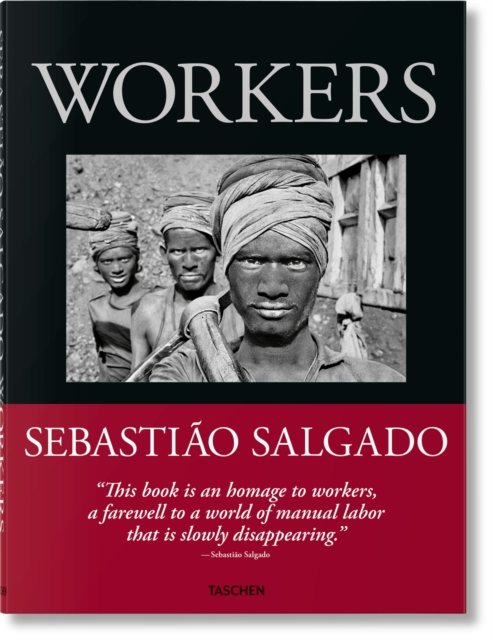Sebastião Salgado’s photo book classic Workers. An Archaeology of the Industrial Age (first published in 1993) pays tribute to the time-honored tradition of manual labor in the new millennium when machines and computers replace human workers throughout the globe. With images of striking beauty and integrity, Salgado composes a visual elegy for the working men and women, whose indomitable spirit has prevailed over the harshest of conditions to achieve a singular grace.
More than those of any other living photographer, Sebastião Salgado’s images of the world’s poor stand in tribute to the human condition. Salgado defines his work as “militant photography”, dedicated to “the best comprehension of human being”; over the decades he has bestowed great dignity on the most isolated and neglected among us — from famine-stricken refugees in the Sahel to the indigenous peoples of South America.
With Workers, Salgado brings us a global epic that transcends mere image making to become an affirmation of the enduring spirit of working men and women. In this volume, three hundred fifty duotone photographs form an archaeological perspective of the activities that have defined hard work from the Stone Age through the Industrial Revolution to the present. With images of the infernal landscape of an Indonesian sulfur mine, the drama of traditional Sicilian tuna fishing, and the staggering endurance of Brazilian gold miners, Salgado unearths layers of visual information to reveal the ceaseless human activity at the core of modern civilization.
Workers presents its subject on several interactive levels: Salgado’s introductory text, written in collaboration with Brazilian author Eric Nepomuceno, expands his passionate photographic iconography; extended captions, also written by Salgado, provide a historical and factual framework. Honoring the timeless and indomitable spirit of the manual laborer, Workers renders the human condition with honesty and respect.
Sebastiao Salgado. Workers. An Archaeology of the Industrial Age
€99.00
Taschen books
- Author: Lelia Wanick Salgado
- Manufacturer: Taschen GmbH
- Language: Angļu valoda
- ISBN code: 9783836596329
- Cover type: Hard cover
- Year of publication:2024
- Number of pages:400
Product available in stock!
Product available in stock - description

Attention: Delivery of sale books may be delayed!

Discount on full price items. Discounts cannot be combined!

Orders are processed on weekdays from 10:00 to 18:00.

Free delivery to OMNIVA parcel machines in Latvia for orders over €40.00.

Free delivery to any GLOBUSS bookstore within 2-5 working days.
Share on social networks:
Product description
 Similar products
Similar products
Take a look
 Someone bought recently
Someone bought recently
These books have been noticed by other visitors to the page


.jpg)
.jpg)
.jpg)
.jpg)
.jpg)
.jpg)
.jpg)
.jpg)